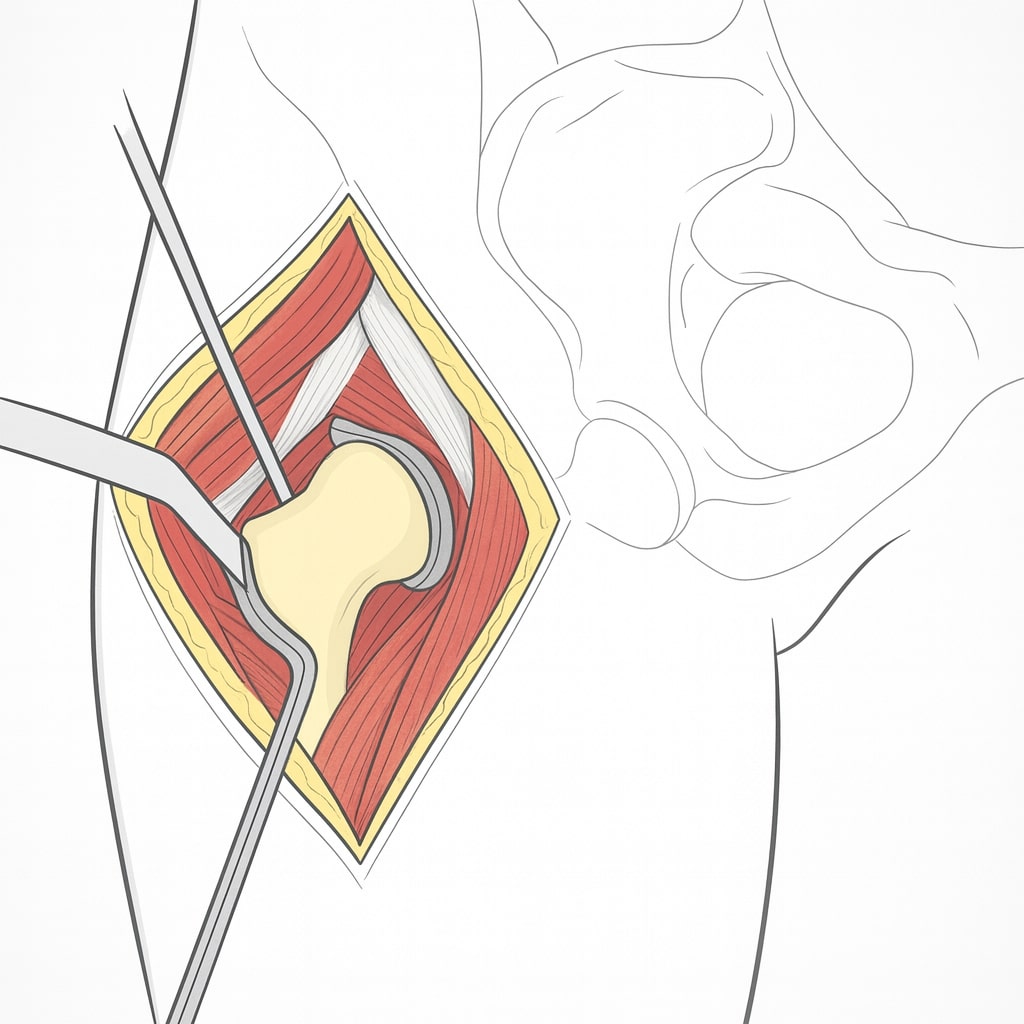Less Pain After Surgery
A 2023 study reviewed 24 research papers with over 2,000 patients. It found that people who had the anterior approach felt much less pain in the first few weeks compared to traditional surgery.
Are you tired of hip pain holding you back? Hip replacement surgery can get you moving again, and the anterior approach is a modern, less painful option that helps you recover faster.
In a hip replacement, a surgeon replaces your worn-out hip joint with an artificial one to ease pain and improve movement. Traditionally, surgeons cut through big muscles in the back or side of your hip. The anterior approach, however, goes through the front. The surgeon moves muscles aside instead of cutting them, using special tools and a high-tech table called Hana®. This means: Less damage to your body, a smaller scar (just 3-4 inches), a smoother, quicker recovery.

A 2023 study reviewed 24 research papers with over 2,000 patients. It found that people who had the anterior approach felt much less pain in the first few weeks compared to traditional surgery.
Patients walked and moved better just 6 weeks after surgery. By 12 weeks, they were ahead of those who had side-approach surgery.
Anterior approach patients often leave the hospital in 1-2 days, and some even go home the same day.
Since the surgeon doesn’t cut major muscles, there’s less trauma and a lower risk of dislocation.
Start walking with help the same day and switch to a cane in a week or two.
Spend less time recovering and more time exploring or relaxing.
Only specially trained surgeons offer this technique, so you’ll get world-class treatment from top professionals.
Comprehensive preoperative assessment—via telemedicine or in-person—review of medical history, imaging studies (X-ray, MRI/CT), and discussion of the surgical plan, expected outcomes, and patient-specific risk factors.
Targeted prehabilitation including cardiopulmonary evaluation, laboratory testing, and structured physical therapy to optimize muscle strength and joint mobility. Detailed instructions on fasting, medication adjustments, and thromboprophylaxis provided.
Under regional or general anesthesia, an 8–10 cm anterior incision is made on a specialized Hana® table. Muscles and neurovascular structures are retracted to expose the hip joint, and the prosthesis is implanted under fluoroscopic guidance. Duration: 60–120 minutes.